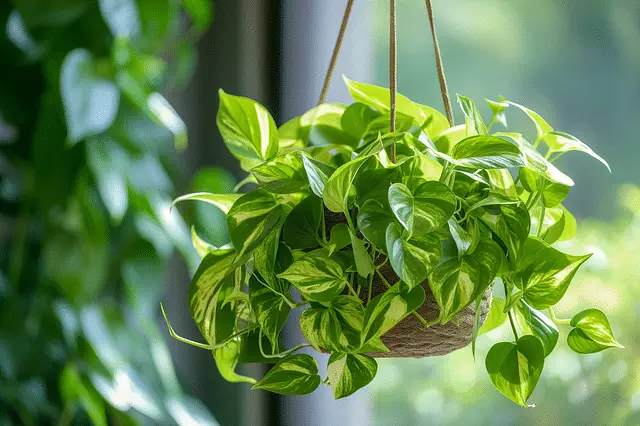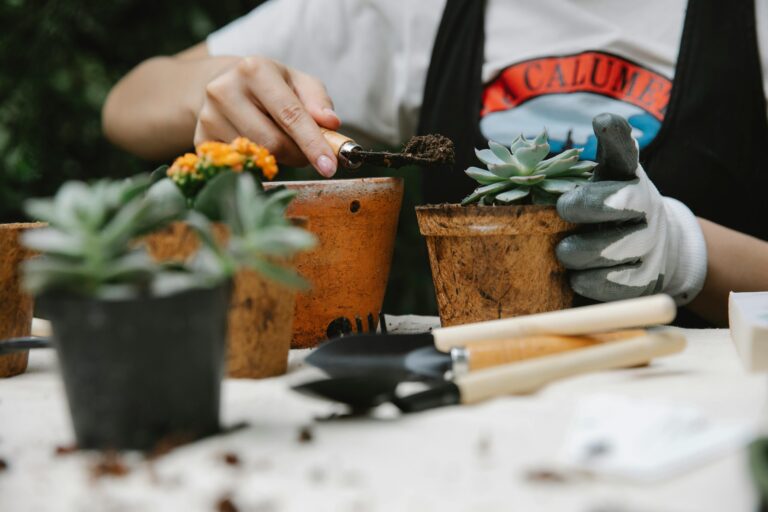Pothos Care: Tips for a Fuller Plant
Are you looking to elevate your indoor greenery game effortlessly? Pothos plants, with their lush foliage and easy maintenance, are the perfect choice for plant enthusiasts of all levels. In this blog, we delve into expert tips to help your Pothos thrive and achieve a fuller, more vibrant appearance.
From ideal lighting conditions to watering schedules and propagation techniques, we’ve got you covered with the latest insights to ensure your Pothos flourishes. Whether you’re a seasoned plant parent or just starting your green journey, these practical tips will guide you towards a healthier, fuller Pothos. Get ready to witness your Pothos transform into a stunning botanical masterpiece!
Table of Contents
Choosing the Right Location for Your Pothos Plant
Choosing the right location for your pothos plant is crucial for its overall growth and health. With its versatility and adaptability, this popular houseplant can thrive in various lighting conditions, but there are still some key factors to consider.

- Light Requirements:
- Bright, Indirect Light: Pothos thrives in bright, indirect sunlight. Avoid placing it in direct sun, as this can lead to leaf burns.
- Filtered Light: Find a spot where your plant receives a few hours of filtered light each day.
- Temperature and Environment:
- Temperature Range: Pothos prefers temperatures between 65°F to 85°F (18°C to 29°C).
- Avoid Drafts: Keep your pothos away from drafty windows or doors to prevent sudden temperature fluctuations.
- Humidity Considerations:
- Higher Humidity: Pothos appreciates higher humidity levels.
- Dry Homes: If your home tends to be dry, use a humidifier or place a water-filled tray near the plant to increase moisture in the air.
By taking these factors into consideration and providing the proper lighting, temperature, and humidity conditions, you can create an optimal environment for your pothos plant to flourish.
“The Ultimate Guide to Pothos Plants” offers a comprehensive resource for both beginners and experienced plant enthusiasts. With detailed explanations and fabulous pictures, it simplifies the process of identifying various Pothos, Philodendron, and Scindapsus varieties. The book not only covers classification but also provides valuable tips on watering, propagation, and general care. While some reviewers appreciate its usefulness and clear guidance, others note minor drawbacks such as typos or lack of extensive information. Overall, it’s a valuable addition to any plant lover’s library, offering practical insights into nurturing these popular houseplants.
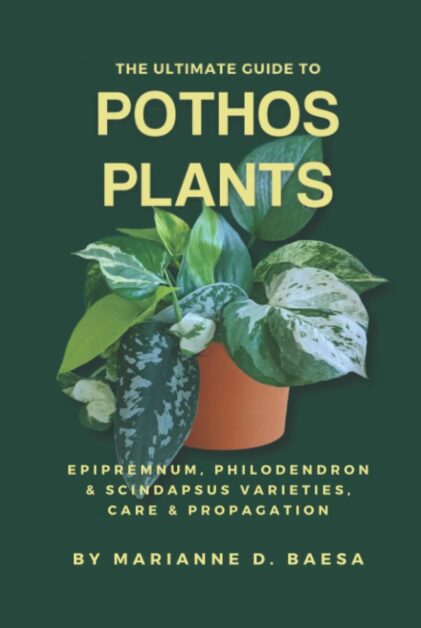
✅ Clear Explanations: Readers appreciate the detailed explanations provided in the book, covering different varieties of pothos, philodendron, and scindapsus. The clarity of the content ensures that readers can easily understand and apply the information to their own plant care practices.
✅ Visuals: The book features high-quality images that accompany the text, enhancing the learning experience for readers. These visuals help in plant identification and provide visual cues for proper care techniques, making the information more accessible and engaging.
✅ Useful Tips: It offers practical tips for plant care, including watering, propagation methods, and other essential aspects of maintaining healthy pothos plants. The inclusion of tips allows readers to make informed decisions about caring for their plants and troubleshoot any issues they may encounter.
✅ Suitable for All Levels: While the book is beneficial for beginners due to its comprehensive nature and detailed explanations, it also contains substantial information that appeals to more experienced plant enthusiasts. This versatility ensures that readers of all skill levels can benefit from the content.
❌ Limited Coverage: Despite providing valuable insights into pothos care, propagation, and identification, the book may lack comprehensive coverage of every aspect related to these plants. Readers looking for exhaustive details on specific topics may need to supplement their reading with additional resources.
❌ Scope: While the book primarily focuses on pothos plants, it also includes information on related species such as philodendron and scindapsus. While this broadens the book’s appeal, some readers may prefer a more narrowly focused resource solely dedicated to pothos plants.
The Importance of Proper Lighting for Pothos Growth
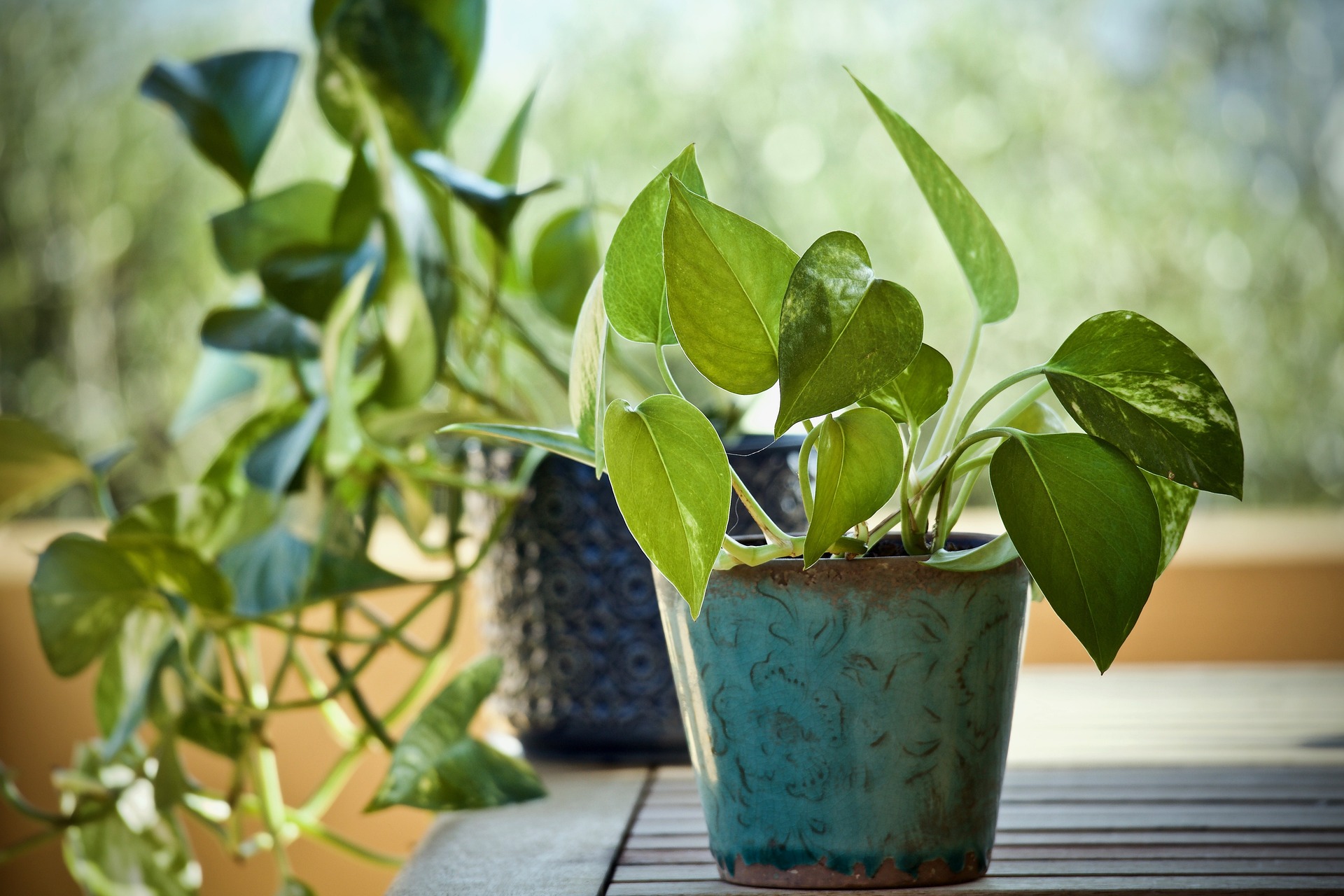
- Proper lighting is crucial for the growth and overall health of your Pothos plant.
- As a tropical plant, Pothos thrives in bright indirect light, making it an ideal fit for indoor settings.
- Placing your Pothos near a north or east-facing window is recommended, as it will receive sufficient light without being exposed to direct sunlight, which can scorch its delicate leaves.
- If natural light is limited in your space, you can also opt for artificial lighting options, such as fluorescent or LED grow lights, to provide the necessary light intensity.
- The intensity and duration of light are essential factors to consider when providing adequate lighting for your Pothos.
- Ideally, your plant should receive approximately 10-12 hours of light each day.
- However, it is crucial to strike a balance and avoid excessive exposure to light, as it can lead to leaf burning or premature foliage yellowing.
- Monitoring the growth and appearance of your Pothos will help you determine whether it is receiving the optimal lighting conditions.
Remember that every Pothos plant is unique, and adjustments to the lighting conditions may be necessary to ensure its overall well-being.
Having utilized the SunBlaster SL0900151 13 Watt CFL Grow Lamp 4 Pack for my indoor gardening needs, I can confidently attest to its effectiveness and value. These compact fluorescent lamps provide a balanced spectrum of light, mimicking the natural sunlight necessary for optimal plant growth. Easy to use and energy-efficient, they offer up to 10,000 hours of continuous illumination, ensuring long-lasting performance.
Whether you’re propagating seedlings or nurturing mature plants, these CFL grow lamps are suitable for various indoor gardening applications. Additionally, their compatibility with standard light fixtures makes them convenient to incorporate into any setup. Overall, I highly recommend the SunBlaster CFL Grow Lamp 4 Pack for anyone seeking reliable and efficient lighting solutions for indoor gardening.
- Balanced Spectrum: The SunBlaster CFL grow lamps provide a balanced spectrum of light, which is essential for optimal plant growth. This ensures that plants receive the right amount of light for photosynthesis and overall health.
- Energy Efficient: With only 13 watts of power consumption per lamp, these CFL bulbs are energy-efficient. They help save on electricity bills while providing ample light for indoor gardening.
- Longevity: Each lamp boasts a lifespan of up to 10,000 hours of light. This longevity ensures that users won’t need frequent replacements, saving both time and money in the long run.
- Versatile Usage: Suitable for various indoor gardening applications, these lamps can be used with any standard light fixture. Whether for seed starting, growing herbs, or maintaining houseplants, the SunBlaster CFL lamps offer versatility.
- Affordable: Sold in a convenient 4-pack, these CFL lamps offer value for money, providing multiple bulbs at a reasonable price point.
- Brightness Limitation: While the lamps provide adequate light for indoor gardening, some users may find them lacking in brightness compared to other grow light options. Depending on the specific needs of plants and space, additional lighting sources may be required.
- Quality Concerns: Opinions on quality are mixed among users. While many appreciate the performance and longevity of the lamps, others have expressed concerns about durability or inconsistencies in light output.
- Limited Application: While suitable for a variety of indoor gardening purposes, these CFL lamps may not be sufficient for larger-scale or specialized plant cultivation projects. Users with extensive gardening setups may need to supplement their lighting with additional sources.
Temperature and Humidity Considerations for Pothos Care
Pothos thrives in temperatures between 60°F to 85°F (15°C to 29°C).
Tolerates cooler temperatures down to 50°F (10°C) and warmer climates up to 95°F (35°C).
Maintain a steady temperature within this range to prevent stress on the plant.
Moderate to High Humidity: Pothos prefers humidity levels between 40% and 60%.
Low Humidity: Dry air can lead to brittle leaves.
Excessive Humidity: Avoid creating a breeding ground for fungal diseases.
Tips: Place a water-filled tray nearby or use a humidifier. Occasional misting also helps.
Remember, a happy pothos is one that enjoys the right balance of temperature and humidity. 🌿🌱
Selecting the Ideal Pot and Soil for Your Pothos Plant
When it comes to selecting the ideal pot and soil for your pothos plant, there are a few key considerations to keep in mind.
Selecting the Ideal Pot for Pothos Plants

- Pot Size:
- Choose a pot that provides adequate space for growth.
- Pothos plants have trailing vines, so opt for a pot that accommodates both root and top growth.
- Start with a pot that is at least 2-4 inches larger in diameter than the root ball.
- Pot Material:
- Clay or Terracotta Pots:
- Popular choices for Pothos.
- Provide good drainage.
- Allow air circulation around roots.
- Plastic or Ceramic Pots:
- Suitable alternatives.
- Ensure they have drainage holes at the bottom.
- Clay or Terracotta Pots:
Choosing the Right Soil for Pothos
- Well-Draining Mix:
- Pothos prefer soil that drains well.
- Avoid waterlogged conditions.
- Use a high-quality potting soil.
- Mix with perlite or vermiculite to enhance drainage.
- Avoid Garden Soil:
- Garden soil may be too dense.
- Can lead to root rot.
- Opt for specialized potting mixes instead.
Remember these guidelines to give your Pothos the best possible start in its new home! 🌿🪴
Watering Techniques for a Thriving Pothos
Pothos plants are known for their hardiness and adaptability, but proper watering techniques are crucial for ensuring their continued growth and vibrancy. Overwatering or underwatering can have detrimental effects on these leafy beauties, so it’s important to strike the right balance,
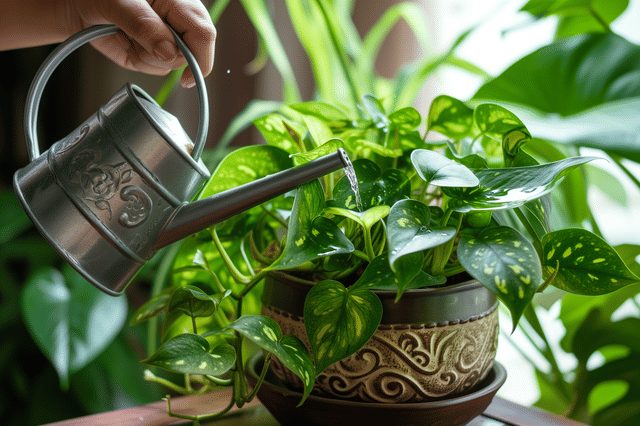
- Soil Moisture Observation:
- Check the Top Inch: Rather than sticking to a rigid watering schedule, assess the soil moisture by feeling the top inch with your finger.
- Dry Soil: If it feels dry, it’s time to water.
- Moist or Damp Soil: Hold off on watering for a few more days.
- Underwatering vs. Overwatering:
- Err on the Side of Underwatering: Pothos prefers slightly drier conditions.
- Root Rot Risk: Overwatering can lead to root rot, so be cautious.
- Proper Drainage:
- Drainage Holes: Ensure your pothos pot has proper drainage holes.
- Prevent Waterlogging: Excess water should escape, preventing roots from sitting in stagnant water.
- Avoid Saucers: Don’t let your pothos sit in a saucer of water for extended periods.
- Regular Watering: Water your pothos once per week with approximately 1 cup (250 ml) of water. Allow the soil to dry slightly between waterings to prevent overwatering.
- Deep Watering: Every 2 weeks, provide a deep watering by using around 2 cups (500 ml) of water. Ensure that the water reaches the roots deeply for optimal hydration.
- Bottom Watering: Once per month, bottom water your pothos by placing the pot in a tray of water for absorption. This method helps the plant absorb water from the bottom up.
- Visual Inspection: Check the soil moisture visually and water as needed. Observe the dryness of the soil to determine when watering is necessary.
- Finger Test: Insert your finger into the soil as needed to check moisture levels. Water the pothos if the soil is dry 1-2 inches deep.
- Wilting Indicator: Monitor your pothos for signs of wilting or droopy leaves. If the plant shows these signs, it’s an indication that it needs watering to revive.
Fertilizing Your Pothos: Dos and Don’ts
Fertilizing your Pothos plant is an essential aspect of its care and growth. Providing your plant with the right nutrients can enhance its vibrancy and overall health. However, it is important to follow certain dos and don’ts to ensure the best results.
| Dos | Don’ts |
|---|---|
| Use a balanced fertilizer with a 3-1-2 NPK ratio for pothos plants. | Avoid over-fertilizing, as it can lead to nutrient imbalances and plant damage. |
| Dilute liquid fertilizer to prevent over-application and potential harm to the plant. | Do not use dry fertilizer on dry soil, as it may cause stress to the plant. |
| Monitor the plant’s response to fertilization and adjust dosages accordingly. | Do not apply fertilizer directly to the leaves, as it can cause damage. |
| Water thoroughly after fertilizing to help distribute nutrients evenly. | Avoid fertilizing during the plant’s dormant periods, such as fall and winter. |
| Consider slow-release fertilizers for gradual nutrient release over time. | Do not fertilize without checking the soil’s nutrient levels and the plant’s needs. |
| Use organic compost for a gentle and steady release of nutrients. | Avoid using a fertilizer that is too potent, as it can harm the plant. |
| Apply fertilizer evenly at the base of the plant to ensure proper distribution. | Do not let excess fertilizer accumulate in the soil, as it can lead to over-fertilization. |
| Prune damaged leaves caused by over-fertilization to promote new growth. | Do not ignore signs of over-fertilization, such as yellowing or browning of leaves. |
| Flush out excess nutrients by watering the plant thoroughly if over-fertilization occurs. | Avoid repotting the plant with nutrient-rich soil immediately after over-fertilization. |
By following these dos and don’ts of fertilizing your Pothos, you can ensure that your plant grows into a lush and vibrant beauty. Implementing these guidelines will provide your Pothos with the necessary nutrients it requires without causing harm.
Pruning and Propagating Pothos for Fuller Growth
Pruning and propagating are essential practices for promoting fuller growth in your Pothos plants. Pruning involves trimming back overgrown or leggy branches to maintain a compact and bushy shape, while propagation allows you to create new plants from existing ones.
Let’s delve into the details of these techniques and learn how to maximize the lushness of your Pothos.
- Pruning should be done regularly to keep your Pothos plant healthy and encourage it to produce more foliage.
- Start by inspecting the plant for any yellowing or damaged leaves, as these can hinder growth.
- Using clean and sharp pruning shears, make clean cuts just above a node, which is where leaves and stems emerge.
- By cutting above a node, you promote new growth in that area, resulting in a denser and fuller plant.
You can prune back any excessively long or unruly branches, ensuring that each cut is made at a slight angle to prevent water from pooling on the wound. Regular pruning not only improves the aesthetics of your Pothos but also enhances its overall health and vigor.
Preventing and Treating Common Pothos Pests
Common pests can wreak havoc on your beloved Pothos plants, but with proper prevention and treatment, you can keep these pesky intruders at bay. One of the most common pests that affect Pothos plants is the spider mite. These tiny creatures can infest your plants, causing leaves to turn yellow and wither.
| Pest | Symptoms | Treatment | Effect on Plants |
|---|---|---|---|
| Aphids | – Curling or yellowing leaves. – Sticky sap on leaves. – Often found on the underside of leaves. | – Mix a soapy neem oil solution (2 tbsp soap + 2 tbsp neem oil per gallon of water). – Spray plant perimeter. | – Sap-sucking weakens plants. – Distorted growth. – Yellowing leaves. |
| Spider Mites | – Tiny white or yellow spots on leaves. – Silky webs. – Severe infestations lead to yellow or bronze appearance. | – Shake affected leaves over white paper to check for mites. – Spray with water to dislodge them. – Use insecticidal soaps. | – Yellowing leaves. – Webs damage foliage. – Reduced plant vigor. |
| Mealybugs | – White, cotton-like clusters on stems and leaves. – Sticky residue. – Stunted growth. | – Remove mealybugs manually with a cotton swab dipped in alcohol. – Spray with insecticidal soap. – Isolate infected plants. | – Sap-sucking weakens plants. – Yellowing leaves. – Stunted growth. |
| Scale Insects | – Brown or tan bumps on stems and leaves. – Sticky residue. – Yellowing leaves. | – Scrape off scales with a soft brush or fingernail. – Apply horticultural oil or insecticidal soap. – Prune heavily infested areas. | – Sap-sucking weakens plants. – Yellowing leaves. – Premature leaf drop. |
| Fungus Gnats | – Tiny black flies around soil. – Larvae in soil feed on roots. – Yellowing leaves. | – Allow soil to dry between waterings. – Use yellow sticky traps. – Apply beneficial nematodes to soil. | – Root damage. – Reduced plant growth. – Foliage discoloration. |
Remember to monitor your pothos regularly, practice good hygiene, and promptly address any pest issues to keep your plants healthy and thriving!
Recognizing and Addressing Leaf Yellowing in Pothos
Leaf yellowing in Pothos plants can be a cause for concern and may indicate an underlying issue that needs to be addressed. There are several possible reasons why the leaves of your Pothos plant may turn yellow, ranging from environmental factors to nutrient deficiencies.
overwatering

- One common reason for leaf yellowing is overwatering.
- Pothos plants prefer slightly moist soil and can be sensitive to overwatering.
- When the roots are constantly saturated, they may become waterlogged and lack oxygen, leading to yellowing leaves.
- To address this issue, it is important to ensure that the soil is well-draining and that you are watering your Pothos plant appropriately, allowing the top inch of soil to dry out before watering again.
- Additionally, make sure that the pot your Pothos is in has proper drainage holes to prevent water from pooling at the bottom.
nutrient deficiencies
- Another possible cause of leaf yellowing is nutrient deficiencies.
- Pothos plants require a balanced supply of nutrients, including nitrogen, phosphorus, and potassium, along with other essential micronutrients.
- If your plant’s leaves are turning yellow, it may be lacking in these nutrients.
- To address this issue, you can use a balanced fertilizer specifically formulated for houseplants and follow the recommended dosage.
- However, it is important to avoid over-fertilization, as this can lead to another set of problems. It is always best to refer to a reputable and trusted source for specific fertilizer recommendations for Pothos plants.
Managing Root Rot and Overwatering Issues in Pothos
Root rot and overwatering are common issues that can affect the health and growth of your beloved Pothos plants. These problems arise when the roots of the plant are constantly sitting in water, leading to oxygen deprivation and the proliferation of harmful pathogens. Improper watering practices and inadequate drainage systems are often the culprits behind these troubles.
Identifying Root Rot:
- Symptoms of root rot include yellowing leaves, wilting, and mushy, discolored roots.
- Early detection involves examining the plant’s above-ground parts and root system for signs like yellow or brown leaves and soft, dark roots.
Treating Root Rot:
- Cease watering immediately to prevent further waterlogging.
- Trim affected roots, remove the plant from its pot, and wash the roots.
- Consider using a fungicide treatment for severe cases.
- Repot the Pothos in fresh, well-draining soil to prevent future root rot.
Preventative Measures:
- Water carefully by checking the soil moisture level before watering.
- Ensure pots have adequate drainage holes to prevent water accumulation.
- Use sterilized potting mix to avoid pathogens that can cause root rot.
- Regularly inspect plants for early detection of diseases like root rot.
By implementing these strategies, you can effectively manage root rot and overwatering issues in Pothos plants, promoting their health and vitality.
Enhancing Pothos Growth with Proper Nutrient Balance
Pothos plants are not only aesthetically pleasing, but they also offer numerous health benefits. To ensure the growth and vibrancy of your Pothos, it is essential to provide them with a proper nutrient balance.
| Nutrient | Role | Recommendations |
|---|---|---|
| Nitrogen (N) | Encourages leaf and root development. | – Use a balanced fertilizer with an N-P-K ratio of 20-20-20 or similar. – Follow manufacturer’s instructions for dosage and frequency. |
| Phosphorus (P) | Aids in root formation and flowering. | – Avoid excess phosphorus, as it can harm the plant. – Balanced fertilizers usually provide adequate phosphorus. |
| Potassium (K) | Contributes to overall plant health and disease resistance. | – Maintain a balanced nutrient ratio. – Avoid over-fertilization. |
| Micronutrients (e.g., iron, manganese, zinc) | Essential for enzyme systems and biochemical reactions. | – Consider micronutrient supplements if needed. – Ensure proper soil pH for micronutrient availability. |
| Organic Matter | Improves nutrient availability and soil structure. | – Incorporate well-rotted compost or organic fertilizers. – Enhances water retention. |
Remember to monitor your Pothos closely and adjust care practices as needed to keep them thriving! 🌿🍀
Training and Supporting Pothos Vines for Optimal Fullness
Training and supporting your Pothos vines properly is essential for achieving optimal fullness and lushness in your plants. By implementing the right techniques, you can encourage vigorous growth and create an attractive, cascading display.
- Pothos plants are natural climbers that use adhesive aerial roots to attach to various surfaces, such as moss poles, coir totems, trees, trellises, stakes, and walls.
- To encourage optimal growth and fullness, it is essential to provide suitable surfaces for climbing, such as moss poles or coir totems, which allow the roots to grow inside the support.
- Allowing Pothos to climb promotes its mature stage, leading to larger leaves and the development of splits or fenestrations.
- When training Pothos to climb, it is crucial to avoid surfaces that the roots cannot adhere to, such as thin trellises or string.
- For best results, trim long vines to 3-4 nodes before training them to climb on a pole.
- Avoid using cuttings or young plants less than six months old for climbing, as their weight may cause them to fall over.
- When growing Pothos on a trellis, untreated wood lattice provides a wider surface for root attachment. Use garden staples to secure the vines and maintain moisture for successful climbing.
Remember, proper training and supporting of your Pothos vines will lead to fuller and more vibrant plants, creating a visually pleasing focal point in any space. Stay tuned for more helpful tips and techniques to nurture your Pothos to its fullest potential!
Dealing with Pothos Plant Diseases: Identification and Solutions
Pothos plants are generally resilient and easy to care for, but like any plant, they can be susceptible to diseases. Identifying and addressing these diseases promptly is crucial to maintaining the health and vibrancy of your pothos. Two common diseases that can affect pothos plants are Pythium root rot and Xanthomonas leaf spot.
- Pythium Root Rot:
- Cause: Caused by the bacterium Ralstonia solanacearum.
- Symptoms:
- Leaves turn brown and wilt.
- Infected stems blacken and ooze translucent liquid.
- Roots become mushy and decayed.
- Prevention and Treatment:
- Use pathogen-free seed.
- Avoid poorly drained areas.
- Deep clean and sanitize tools and plants in case of an outbreak.
- No effective bactericide; removal and prevention are key.
- Xanthomonas Leaf Spot:
- Cause: Bacterial infection (Xanthomonas campestris pv. vitians).
- Symptoms:
- Small water-soaked lesions on older leaves.
- Lesions bordered by leaf veins, angular in shape.
- Lesions turn black.
- Leaves may drop.
- Prevention and Treatment:
- Promptly remove and destroy infected leaves.
- Avoid overhead watering.
- Ensure good air circulation.
- Consult a professional for severe cases and consider copper-based fungicides if necessary.
Remember to maintain good care practices to keep your pothos healthy! 🌿🍃
Troubleshooting Common Growth Problems in Pothos

Pothos plants are generally low-maintenance and easy to care for, but like any living organism, they can encounter growth problems from time to time. It’s important to be able to troubleshoot these issues and take corrective action to ensure the health and vitality of your Pothos plant.
- Yellowing Leaves: Address yellowing leaves by assessing watering practices to avoid overwatering, which can lead to root rot and yellowing. Check soil pH and provide necessary nutrients through Pothos-specific fertilizers. Ensure adequate sunlight exposure to prevent yellowing leaves.
- Stunted Growth or Lack of New Leaf Development: Combat stunted growth by placing the Pothos in bright, indirect light to support healthy growth. Proper watering is crucial; allow the top inch of soil to dry before watering. If overcrowding is observed, consider repotting the plant to provide ample space for root growth and expansion.
By identifying and addressing these common growth problems, you can ensure that your Pothos plant remains healthy and thrives in its environment. Remember, each plant is unique, so it may require some trial and error to find the ideal conditions for your Pothos. With proper troubleshooting and care, your Pothos will continue to flourish and bring beauty to any indoor space.
Tips for Displaying Pothos in Different Settings
To display your Pothos in various settings, consider the following tips from the provided sources:
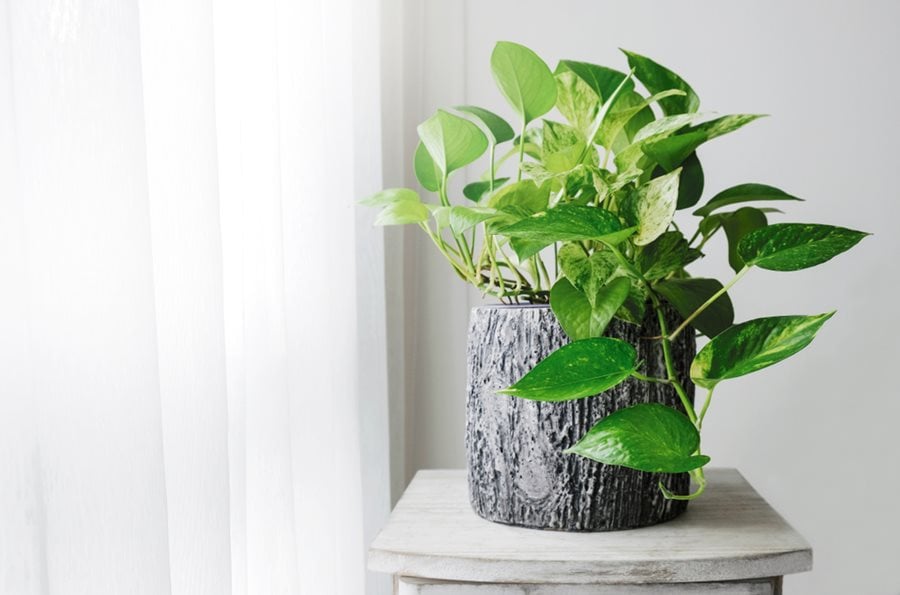
- Hanging Basket Display: Grow a trailing Pothos plant in a hanging basket to allow the foliage to cascade elegantly. This is ideal for bedrooms, living rooms, or offices where you can enjoy the air-purifying benefits.
- Vertical Support: Train a vining Pothos plant up a vertical support like driftwood, bark, trellis, or pole for a natural rainforest effect.
- Horizontal Display: Allow a vining Pothos to sprawl horizontally along a table, mantelpiece, or bookshelf for a softening, living touch.
- Wall or Window Frame: Train long runners of Pothos along a wall or window frame, securing the branches with small cup hooks to integrate the indoors with nature.
- Decorative Pot: Feature a bushy Pothos in a decorative pot as a living accent on a coffee table, end table, office desk, or plant stand.
- Bathroom Display: Place a trailing or bushy Pothos in a bathroom where it thrives on increased humidity and warmth.
- Office Desk: Display a green or slightly variegated Pothos on your office desk to lift your mood during the workday.
- Brighten Dull Spaces: Plant a green Pothos variety in a brightly colored decorative pot to liven up dull corners of your house.
By taking these tips into account, you can ensure that your Pothos plant not only thrives in its new setting but also enhances the overall visual appeal of the space. So go ahead and get creative with your display arrangements, and let your Pothos shine in all its natural beauty.
Conclusion: Achieving Lush and Vibrant Pothos Plants
Achieving lush and vibrant Pothos plants requires careful attention to the various aspects of their care. By understanding their needs and providing optimal conditions, you can ensure that your Pothos plants thrive and flourish.
Bright, Indirect Light: Place your Pothos near a north or east-facing window to provide bright but indirect sunlight.
Avoid Direct Sunlight: Direct sun can scorch Pothos leaves, so keep them away from intense rays.
Temperature Range: Pothos thrives in temperatures between 60°F to 85°F (15°C to 29°C).
Moderate Humidity: Maintain a moderate humidity level to support healthy growth.
Thorough Watering: Water your Pothos thoroughly, allowing excess water to drain from the pot’s bottom.
Check Soil Moisture: Wait for the top inch of soil to dry out before watering again.
Avoid Overwatering: Err on the side of slightly drier soil to prevent root rot.
Taking into account these crucial factors, the location, lighting, temperature and humidity, and watering techniques, you can foster an environment where Pothos plants can thrive. By providing the optimal conditions for their growth, you can enjoy the lush and vibrant beauty of these versatile and resilient plants in your home or garden.
Watch video for more information:
FAQ
Can I grow pothos plants outdoors?
Yes, pothos plants can be grown outdoors in warm climates. They thrive in temperatures between 65-85°F (18-29°C) and require indirect sunlight.
How often should I water my pothos plant?
Pothos plants prefer slightly moist soil, so it’s best to water them when the top inch of soil feels dry. Typically, watering once a week is sufficient, but it may vary depending on the temperature and humidity levels in your environment
Can I use tap water to water my pothos plant?
Tap water can be used to water your pothos plant, but it’s recommended to let it sit out for 24 hours to allow any chlorine to dissipate. Alternatively, you can use filtered or distilled water.
How often should I fertilize my pothos plant?
Pothos plants benefit from regular fertilization during the growing season (spring and summer). A balanced houseplant fertilizer diluted to half strength should be applied every 4-6 weeks.
How Do I Propagate Pothos Plants?
Pothos plants can be easily propagated through stem cuttings. Simply cut a healthy stem just below a node and place it in water or directly into moist potting soil until roots develop.
How can I prevent pests from infesting my pothos plant?
Regularly inspect your pothos plant for pests like mealybugs, spider mites, and scale insects. To prevent infestations, maintain a clean environment, avoid overwatering, and consider using organic insecticidal soap or neem oil if necessary.
Why are the leaves of my pothos plant turning yellow?
Yellowing leaves on a pothos plant can indicate overwatering, underwatering, or nutrient deficiencies. Assess the watering routine, ensure proper drainage, and consider adjusting the fertilizer regimen to address the issue.
How can I prevent root rot in my pothos plant?
To prevent root rot, it’s crucial to provide well-draining soil and avoid overwatering. Allow the top inch of soil to dry out before watering again and ensure that the pot has drainage holes.
How can I train my pothos plant to grow in a certain direction?
You can train pothos vines to grow in a specific direction by gently bending or attaching them to supports such as trellises, moss poles, or stakes. This can help achieve a fuller and more controlled growth.
What are some common diseases that can affect pothos plants?
Pothos plants are generally resistant to diseases, but they can occasionally be affected by fungal infections like leaf spot or root rot. Proper care, including providing good air circulation and avoiding overwatering, can help prevent these issues.

Studied Agricultural Engineering-Plant Protection at University of California, Davis.
Head of Content writing team at Southelmontehydroponics.com

